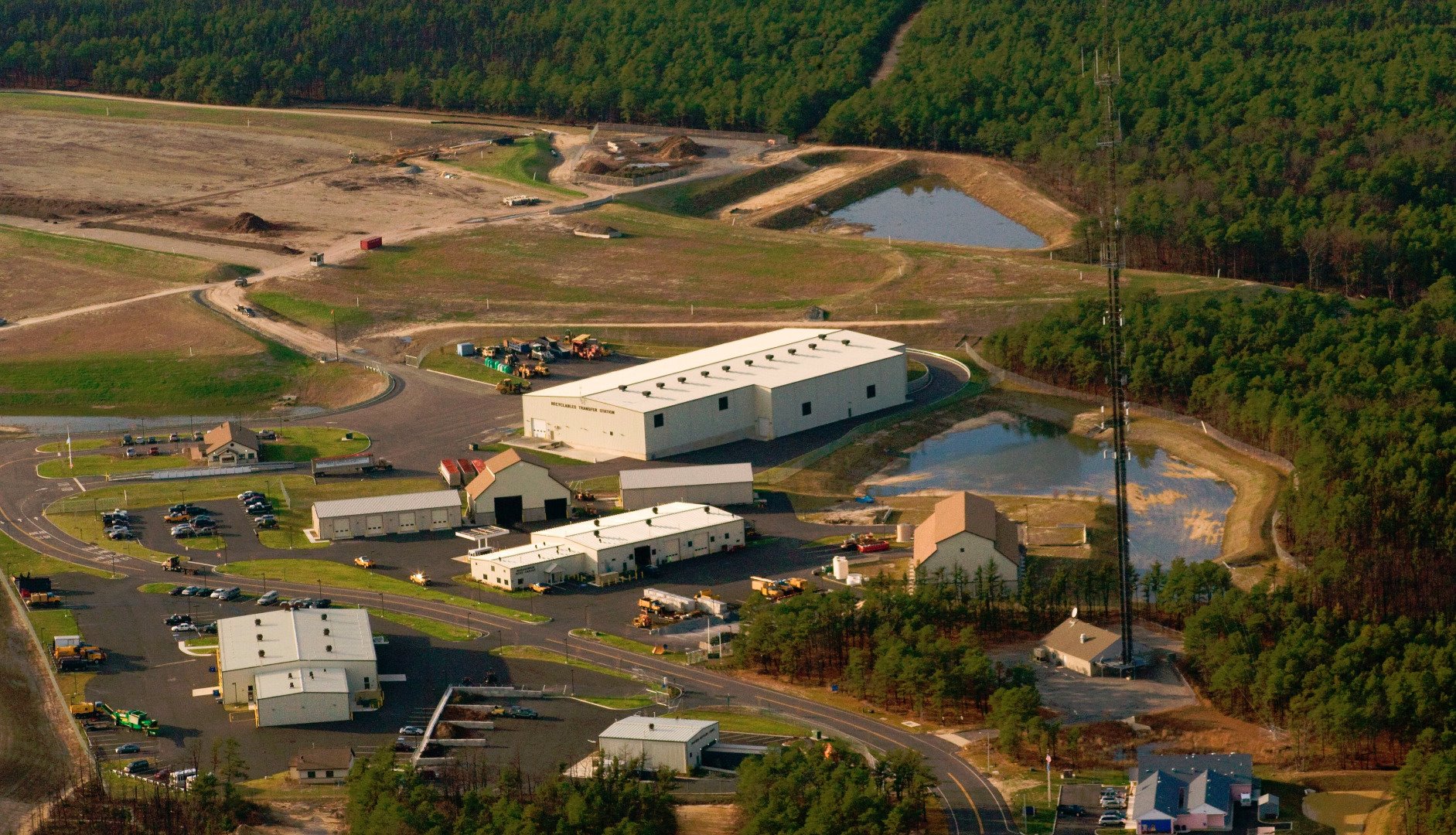Opportunity
From 1950 to 1988, a tract in the Pine Barrens of southern New Jersey was used as a privately owned landfill. The landfill had two disposal areas: an unlined area of 50 acres (20 hectares) and a lined landfill of 12 acres (5 hectares). The groundwater table is about 12 feet (3.6 meters) under the site, and local groundwater was impacted by waste disposal.
The site is located in a Protection Area, as designated by New Jersey’s 1979 Pinelands Protection Act. Nearby is Wells Mills Park, the largest park in Ocean County.
After the landfill ceased operations, leachate collected in the 12-acre lined site was pumped to a lined lagoon and later shipped by tanker to a publicly owned treatment plant. Management of the leachate exhausted the escrowed closure funds, and neither disposal area was closed in compliance with the regulations of the New Jersey Department of Environmental Protection (NJDEP).
In 2000, the NJDEP provided a grant of $15 million to Ocean County to fund the proper closure and maintenance of the unlined 50-acre area.
Solution
Ocean County retained Mott MacDonald to complete permit applications, prepare the engineering design, and provide construction management services to close the 50-acre area.
The closure design began with the consolidation of waste areas and regrading of steep slopes. Broken bottles and glass shards were placed and covered in a five-acre area, and the waste areas compacted using a landfill compactor. The entire 50-acre site was then grubbed and regraded to produce an undulating surface. The overall top of the slope was about 60 feet (18 meters) above the original grade.
A six-inch layer of crushed glass was placed on the regraded landfill, and a grid of 4-inch-diameter (10-cm) perforated drainage pipe was laid on top. Vertical gas wells were placed at the intersections of the drainage pipe. Each vertical gas well included a three-foot-diameter (0.9-meter) borehole with a six-inch (15-cm) perforated PVC riser. A six-inch cushion layer of sand was placed above the glass and covered with a liner made from 40-mil textured VFPE (very flexible polyethylene).
Stormwater management
In designing landfill caps, one of the most critical components is the management of stormwater. Three miles of longitudinal swales, located at 200-foot (61-meter) intervals along the sideslope, were designed to discharge into three downchutes lined with gabions (cages of rocks or concrete). No precipitation that remained as surface runoff on the landfill cover had to travel more than 100 feet (30 meters) before encountering a swale.
The sideslope of each swale was protected by an innovative geomembrane flap that passed beneath the layer of riprap. This prevented water from building up and liquefying the soil and sand, which could cause the sideslope to collapse. The lower edge of each flap was welded to the geomembrane buried below.
Outcome
Construction at the site was completed in 2003. Despite several subsequent hurricanes, the stormwater features have performed effectively. The landfill cover has remained intact and required only standard postclosure maintenance. The proper closure of the landfill has helped protect local groundwater and removed an eyesore from the vicinity of Wells Mills Park.
The project incorporated several sustainable features.
- Crushed glass was sourced from a local county-owned recycling center, which helped control costs and allowed the material to be stockpiled.
- Soil from county road construction was used as clean fill for cap grading and cap construction.
- The synthetic geomembrane cap included 10% recycled content.






